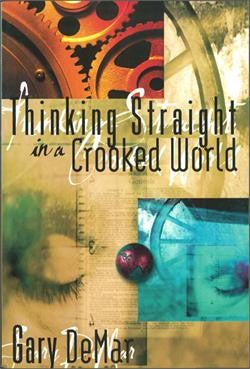Penn Jillette and Raymond Teller are stage magicians. Their act is a mix of comedy, irreverence, and skill. They are also known for exposing quacks, frauds, paranormal beliefs, and claims of the supernatural in the tradition of Harry Houdini and James Randi in their show Penn & Teller: Bulls***t! They ventured into the realm of politics by taking on global warming, gun control, PETA, the War on Drugs, “Safety Hysteria,” recycling, and anything that strikes their fancy in addition.
Their long-running show Penn & Teller: Fool Us deals with magicians performing before the duo to try to fool them with their “magic” tricks.
Penn and Teller also attack frauds who claim to be supernaturally endowed with psychic and other powers. They aren’t the first to do this. Reginald Scot (c. 1538-1599), author of The Discoverie of Witchcraft (1584), exposed the witch-hunting craze of his time. He also applied his observational skills by explaining how feats of magic that many people believed were displays of the supernatural were accomplished by sleight of hand. “If Pharaoh’s magicians had suddenly made frogs,” Scot argued, “why could they not drive them away again? If they could not hurt the frogs, why should we think that they could make them?… Such things as we are being bewitched to imagine, have no truth at all either in action or essence, beside the bare imagination.”[1]
Scot is important because he claimed demonic magic was an illusion. Witches were not in league with the Devil but rather were deluded persons who needed biblical guidance rather than death and torture. He spends time making the case that only God controls physical elements.

Thinking Straight in a Crooked World
The nursery rhyme "There Was a Crooked Man" is an appropriate description of how sin affects us and our world. We live in a crooked world of ideas evaluated by crooked people. Left to our crooked nature, we can never fully understand what God has planned for us and His world. God has not left us without a corrective solution. He has given us a reliable reference point in the Bible so we can identify the crookedness and straighten it.
Buy NowIn addition to Scot, Thomas Ady produced a series of books on the same topic. Little is known of Ady. His first and most well-known work, Candle in the Dark: Or, A Treatise Concerning the Nature of Witches & Witchcraft, published in 1656, was used unsuccessfully by George Burroughs in his defense during the Salem witch trials in 1692. Ady also published A Perfect Discovery of Witches (1661) and The Doctrine of Devils (1676).
If the Bible had been followed, there never would have been any witch trials or an inquisition. In the second part of Candle in the Dark, Ady asks the following questions related to the so-called evidence used against “witches” during the height of the European witch craze:
Where is it written in all the Old and New Testaments that a witch is a murderer, or hath power to kill by witchcraft, or to afflict with any disease or infirmity? Where is it written that witches have imps sucking of their bodies? Where is it written that witches have biggs [nipples] for imps to suck on … that the devil setteth privy marks upon witches … that witches can hurt corn or cattle … or can fly in the air…. Where do we read of a he-devil or she-devil, called incubus or succubus, that useth generation or copulation?[2]
Modern debunking of supernatural claims was standardized by Harry Houdini (Eric Weiss) (1874-1926). Many in Houdini’s day believed that Houdini himself used mystical means to accomplish what he claimed was simple sleight of hand. For example, Sir Arthur Conan Doyle, the author of the Sherlock Holmes detective stories, was convinced that Houdini was himself a medium and capable of supernatural feats through occult powers. He believed that Houdini could only perform some of his tricks by dematerializing. Houdini objected.
I do claim to free myself from the restraint of fetters and confinement, but positively state that I accomplish my purpose purely by physical, not psychical means. The force necessary to “shoot a bolt within a lock,” is drawn from Houdini the living human being and not a medium. My methods are perfectly natural, resting on natural laws of physics. I do not dematerialize or materialize anything; I simply control and manipulate natural things in a manner perfectly well known to myself, and thoroughly accountable for and adequately understandable (if not duplicable) by any person to whom I may elect to divulge my secrets.[3]
As a skeptic of the paranormal, Houdini should be an example to all of us. Don’t be afraid to question claims of preternatural or supernatural phenomena. If you are ever tempted to believe, investigate, question, and doubt: “The first to plead his case seems just, until another comes and examines him” (Prov. 18:17). John tells us to “test the spirits to see whether they are from God, because many false prophets have gone out into the world” (1 John 4:1). Paul writes, “See to it that no one takes you captive through philosophy and empty deception, according to the tradition of men, according to the elementary principles of the world, rather than according to Christ” (Col. 2:8). Don’t be fooled either by the materialist (man-centered “philosophy”) or the magician (“empty deception”), both are the “tradition of men.”
Unlike Penn and Teller, Houdini was not an atheist. “I firmly believe in a Supreme Being,” Houdini wrote, “and that there is a hereafter.”[4] His father was a rabbi.
In addition to Scot, Ady, Houdini, James Randi, and Penn and Teller, Christian “magicians” André Kole and Dan Korem have been relentless in exposing frauds. Kole has written Miracles or Magic?, Mind Games: Exposing Today’s Psychics, Frauds, and False Spiritual Phenomena, and Astrology and Psychic Phenomena. Dan Korem’s Powers: Testing the Psychic and Supernatural and The Fakers, written with Paul Meier, follow a similar methodology. Christians should be familiar with the content and arguments of these books.
So, what does any of this have to do with Penn & Teller’s evaluation of Creationism and Intelligent Design? Here are the questions:
- Do Penn & Teller apply their investigative skills consistently when it comes to the issue of evolution?
- Can magicians, who know that everything they do is a trick (never something from nothing), account for the mechanism that is said to make evolution possible?
While taking on any number of liberal iconic beliefs, including environmental hysteria, Penn & Teller also have attacked the Bible, Creationism, and Intelligent Design, describing them as “impossibilities.” As stage magicians schooled in the art of illusion and diversion who are in the debunking business, Penn & Teller know something about impossibilities. That’s why if someone were to ask them if there is anything supernatural about their performances, like Houdini before them, they would say, without equivocation, “absolutely not.” In fact, they would probably excoriate the questioner for even considering such a thing.
Everything they do is a manipulative trick, and they will be the first to tell you the truth about their business, except for how the trick is done. The operating assumption of anyone who attends a “magic” show must always declare, “I know I’m being fooled, even though I don’t know how.” This reminds me of a scene from the film My Cousin Vinny (1992)[5] where Bill (Ralph Macchio), describes to his cellmate Stan the ability of his cousin Vinny Gambini (Joe Pesci) to uncover the truth, no matter how cleverly disguised:
Bill: At my cousin Ruthie’s wedding, the groom’s brother was that guy Alakazam. You know who I’m talking about?
Stan: The magician with the ponytail?
Bill: Right. Well, he did his act, and every time he made something disappear, Vinny jumped on him. I mean, he nailed him! It was like, “it’s in his pocket,” or “he’s palming it,” you know? Or, “there’s a mirror under the table.” I mean, he was like, he was like, “wait a second, wait a second, it’s joined in the middle, and there’s a spring around it, it pops it open when it’s inside the tube.” It was like Alakazam’s worst nightmare. Vinny was just being Vinny. He was just being the quintessential Gambini.
Penn & Teller make their living as quintessential Gambinis, and they want us to do the same when it comes to supposed claims of the supernatural. Animals, coins, balls, cards, and whatever else don’t appear out of thin air when a magician performs. Tricks are designed, prepped, and executed using natural methods and materials. Nothing is transformed, restored, teleported, levitated, cut in half, or stabbed. Nothing ever vanishes.
Most magicians will never tell how they perform their tricks. Their livelihoods depend on secrecy. It’s the illusion that enthralls an audience. Revealing the solution ends the mystery. So what does this brief introduction have to do with Penn & Teller and their belief in evolution over Creation and/or Intelligent Design? As stage magicians who would never claim they can make life appear on stage from non-life, as adherents of evolution, they must believe that matter arose from nothing and that life arose from non-life. Penn & Teller would never claim they could make a bird appear out of thin air, but they must believe that a bird and every other living thing came to life out of a superheated, initially sterile chemical soup. Penn & Teller could stand on stage and shake a jar of these original chemicals for 20 billion years, and the stuff inside would never come to life. Of course, there is the more fundamental problem of accounting for the stuff in the jar, but we’ll give them that much. What they so cleverly debunk using their illusionist principles and experience, they have not applied these same tried-and-true techniques to the evolutionary worldview, which makes fantastic claims that, in any skeptic’s dictionary, would be defined as magical. Consider the following on “Probability and the Origin of Life” by Robert E. Kofahl:
For roughly fifty years secular scientists who have faith in the power of dumb atoms to do anything have been carrying on scientific research aimed at finding out how the dumb atoms could have initiated life without any outside help. Since they believe that this really happened, they believe that it was inevitable that the properties of atoms, the laws of physics, and the earth’s early environment should bring forth life. More sober minds, however, have realized the immense improbability of the spontaneous origin of life (called “abiogenesis”). Some have made careful investigations and mathematical calculations to estimate what the probability is for abiogenesis to occur. Their calculations show that life’s probability is extremely small, essentially zero.[6]
As stage magicians and debunkers of claims of special powers, Penn & Teller know their tricks are designed either by them or someone else. They also know that those who design the equipment to make certain tricks function use existing material. Those who develop tricks don’t create their apparatuses out of nothing, and Penn & Teller wouldn’t expect it to be any other way. In fact, if some seller of magic tricks came to them and claimed that he could teach them how to make a rabbit really appear out of thin air, they would dismiss him as a kook. But they have no problem believing that the cosmos and life as we know it appeared out of thin air with no intelligence behind the process.
Penn & Teller’s well-scripted magic performances do not happen by chance. A great deal of planning and design goes into every act. And yet they believe in a theory that debunks design, embraces chance, and runs counter to the operating premise that life does not come from non-life. Information theorist Hubert Yockey has argued that chemical evolutionary research faces the following problem:
Research on the origin of life seems to be unique in that the conclusion has already been authoritatively accepted…. What remains to be done is to find the scenarios which describe the detailed mechanisms and processes by which this happened. One must conclude that, contrary to the established and current wisdom a scenario describing the genesis of life on earth by chance and natural causes which can be accepted on the basis of fact and not faith has not yet been written.[7]
In a book he wrote in 1992, Yockey argued that the idea of abiogenesis—life from non-living matter—resulting from a non-directed, mindless primordial soup is a failed hypothesis. “Although at the beginning the paradigm was worth consideration, now the entire effort in the primeval soup paradigm is self-deception on the ideology of its champions.…”[8] Then there is the information problem [9] inherent in the evolutionary hypothesis. How do evolutionists account for the information necessary to make matter work? To begin with, chemicals that end up with humans (let alone everything in between) require changes that increase the genetic information up the evolutionary ladder. This would be like claiming that 2 + 2 equals 5000 without ever accounting for the origin of the immaterial entities 2 and 5000.

Why It Might Be OK to Eat Your Neighbor
The most damning assessment of a matter-only cosmos devoid of a Creator is that we got to this place in our evolutionary history by acts of violence whereby the strong conquered the weak with no one to support or condemn them. Why It Might Be OK to Eat Your Neighbor repeatedly raises the issue of accounting for the conscience, good and evil, and loving our neighbor. It’s shocking to read what atheists say about a cosmos devoid of meaning and morality.
Buy NowKofahl and Yockey are quintessential Gambinis when it comes to exposing the fraud of evolutionary origins. It’s time for Penn & Teller to focus their perceptive and unique talents on a theory that is contrary to everything they claim to believe and practice. As members of the atheistic group called “The Brights,” Penn & Teller should apply their “code” to the theory of evolution: “We Brights don’t believe in ghosts or elves or the Easter Bunny—or God. We disagree about many things, and hold a variety of views about morality, politics and the meaning of life, but we share a disbelief in black magic—and life after death.”[10] They don’t believe in the Easter Bunny or that a rabbit can appear out of thin air, but they do think a rabbit is evolved through innumerable and imperceptible steps from a primordial soup of chemicals, of which they can’t explain the origin. Evolution is a valid form of black magic that ought to be the ultimate stage act for these talented magicians and debunkers of the absurd.
[1] Reginald Scot, The Discoverie of Witchcraft (New York: Dover Publications, 1972), 180. Scot’s work was originally published in 1584, and only 250 copies were reprinted in 1886. It was reprinted once again in Great Britain in 1930. The 1972 Dover edition is the latest reprint, retaining the spelling of the original edition.
[2] Thomas Ady, A Candle in the Dark: or, A Treatise Concerning the Nature of Witches and Witchcraft: Being Advice to Judges, Sheriffes, Justices of the Peace, and Grand-Jury-men, what to do, before they passe Sentence on such as are Arraigned for their Lives as Witches (London: printed for R[obert] I[bbitson] to be sold by Tho. Newberry at the three Lions in Cornhill by the Exchange, 1656).
[3] Quoted in Loraine Boettner, Immortality (Philadelphia, PA: Presbyterian and Reformed, 1956), 156. The quotation can also be found in J. C. Cannell, The Secrets of Houdini (1931), 14.
[4] Harry Houdini, A Magician Among the Spirits (New York: Arno Press, [1924] 1972), xiii.
[5] It’s a shame that My Cousin Vinny has so much foul language in it. It’s a clever movie. If you decide to watch it, make sure it’s on a channel that edits language.
[6] Robert E. Kofahl, “Probability and the Origin of Life”: www.parentcompany.com/creation_essays/essay44.htm
[7] Hubert Yockey, “A calculation of the probability of spontaneous biogenesis by information theory,” Journal of Theoretical Biology (1977), 67:377–398, quotes from pages 379, 396.
[8] Hubert P. Yockey, Information Theory and Molecular Biology (Cambridge University Press, 1992), 336.
[9] Werner Gitt, In the Beginning was Information: A Scientist Explains the Incredible Design in Nature, trans. Jaap Kies (Green Forest, AR: Master Books, 2006).
[10] Daniel C. Dennett, “The Bright Stuff,” New York Times (July 12, 2003).

